Abstract
This study was designed to investigate personal and social factors associated with demand for care by women aged between 20 and 44 years, a group unlikely to suffer from chronic illness. A random sample of women was drawn from the age-sex register of a south London group practice, and information was obtained concerning their daily symptom perception, anxiety level, social and health characteristics, and their consultations for one year. Social class, family involvement, number of children in household, satisfaction with the housing, and use of other health and social services were not associated with demand for general practitioner care. Absence of basic housing amenities, difficulties in running the household, brevity of stay in the house or neighbourhood, and lack of attachment of the neighbourhood were related to a high patient-initiated consultation rate. Some of the possible interpretations of these results are discussed together with their implications for social policy planning.
Full text
PDF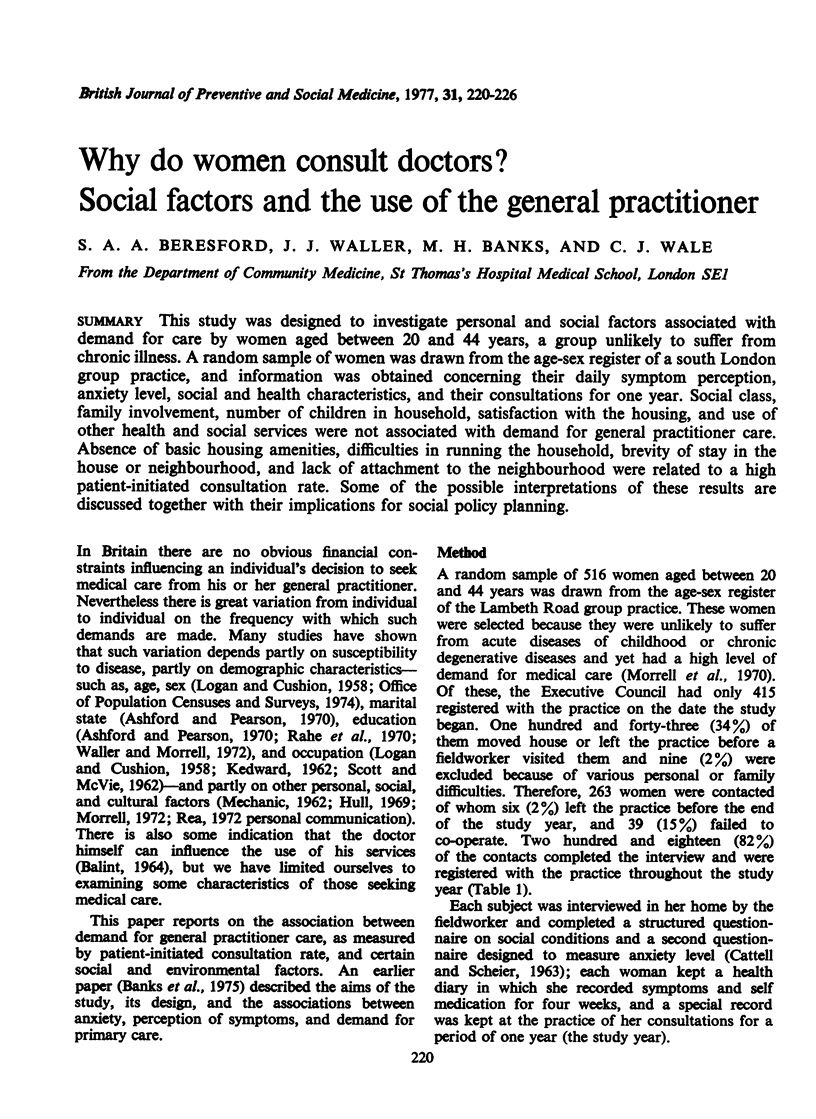
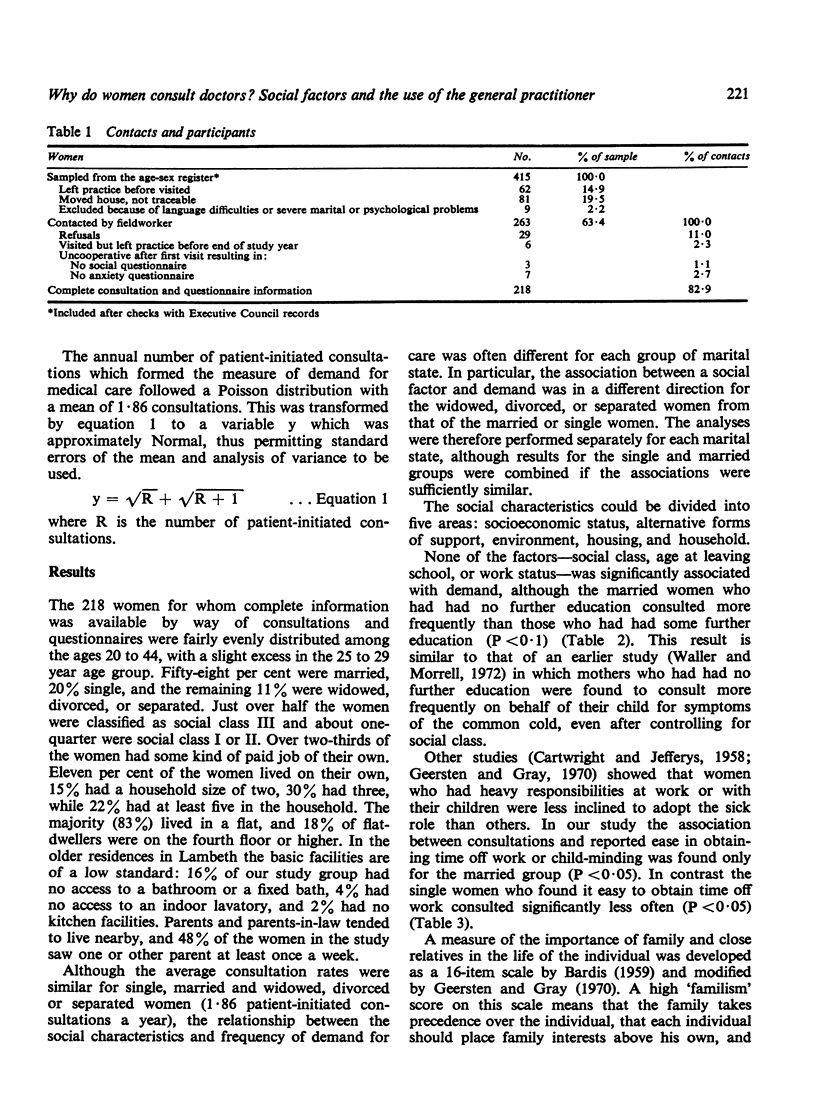

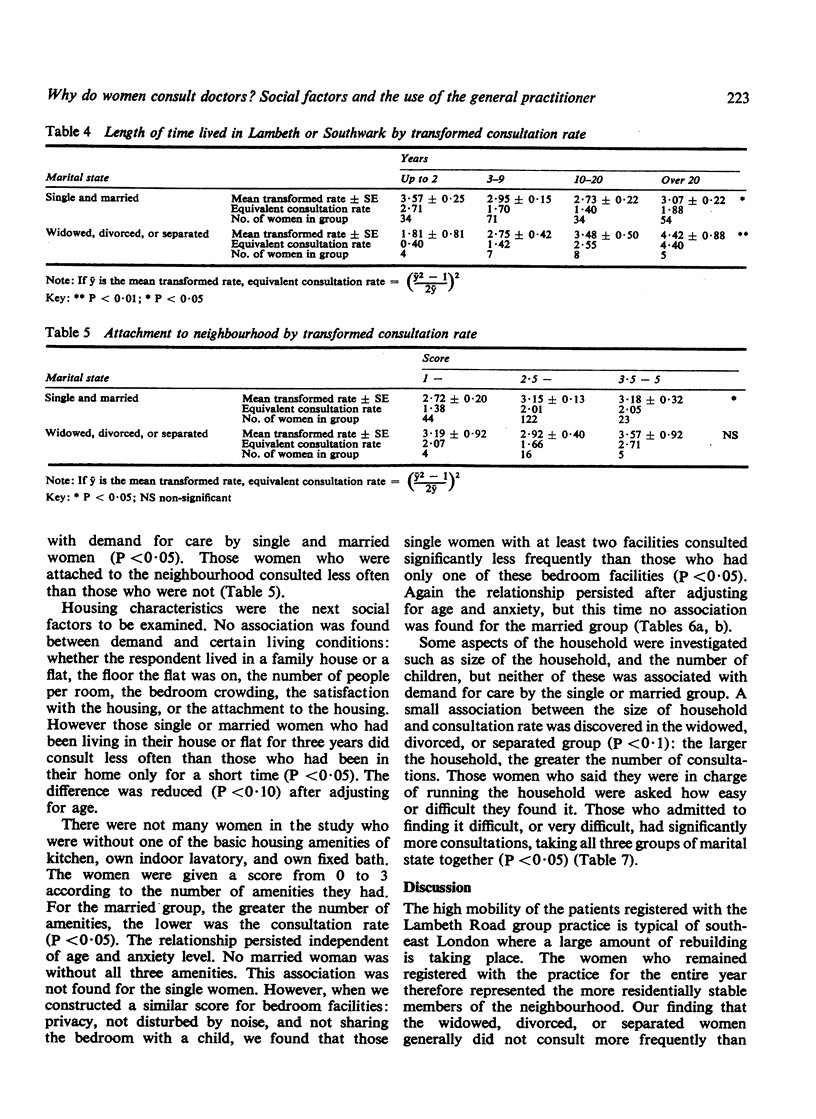
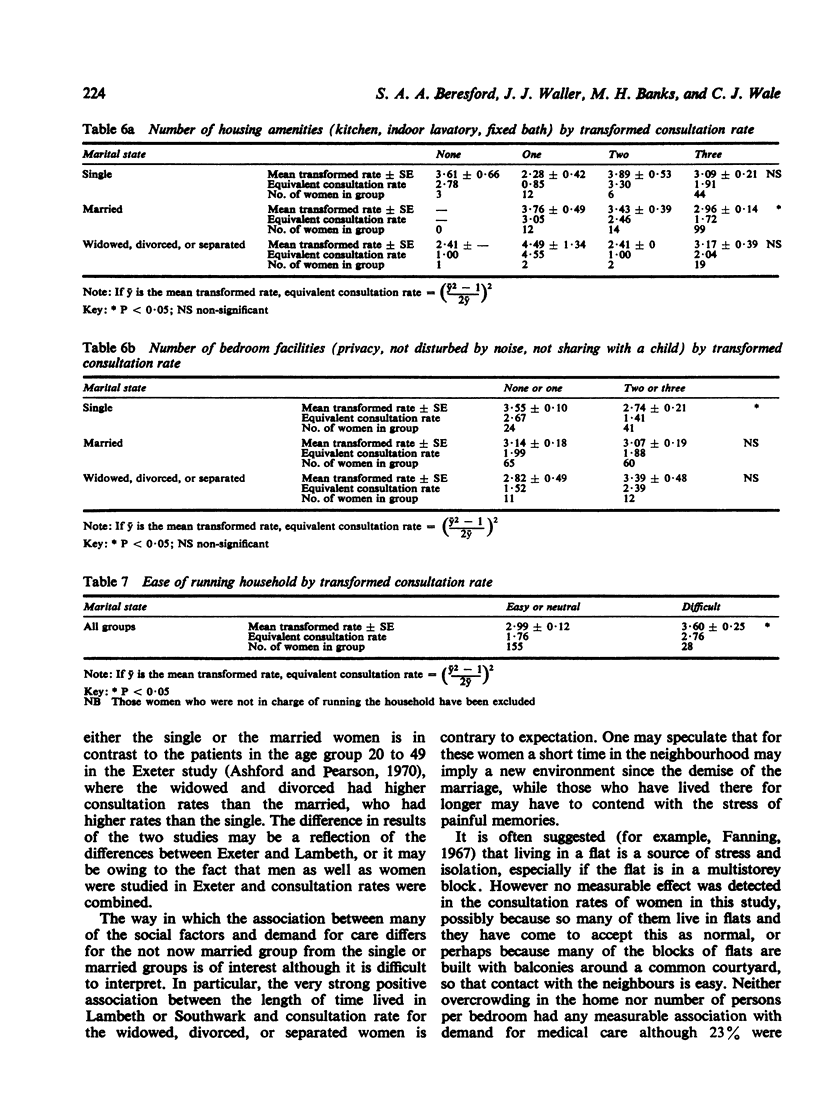
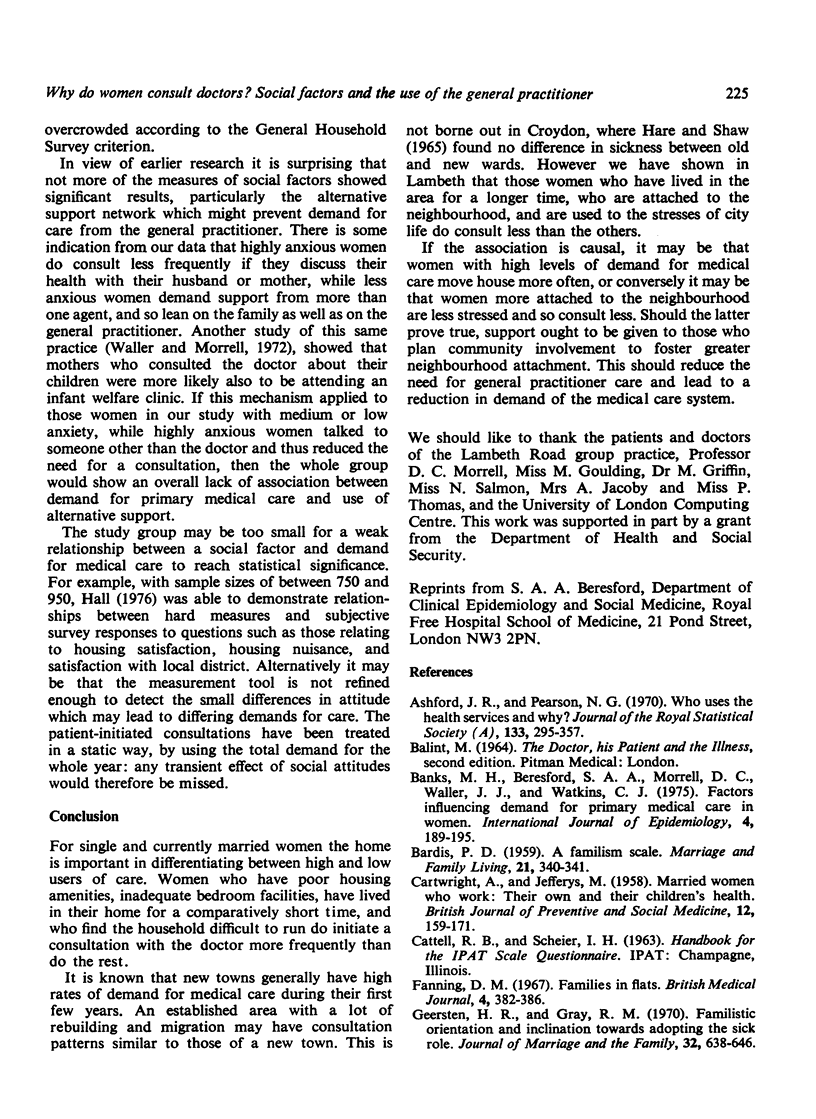

Selected References
These references are in PubMed. This may not be the complete list of references from this article.
- Banks M. H., Beresford S. A., Morrell D. C., Waller J. J., Watkins C. J. Factors influencing demand for primary medical care in women aged 20-44 years: a preliminary report. Int J Epidemiol. 1975 Sep;4(3):189–195. doi: 10.1093/ije/4.3.189. [DOI] [PubMed] [Google Scholar]
- CARTWRIGHT A., JEFFERYS M. Married women who work: their own and their children's health. Br J Prev Soc Med. 1958 Oct;12(4):159–171. doi: 10.1136/jech.12.4.159. [DOI] [PMC free article] [PubMed] [Google Scholar]
- Fanning D. M. Families in flats. Br Med J. 1967 Nov 18;4(5576):382–386. doi: 10.1136/bmj.4.5576.382. [DOI] [PMC free article] [PubMed] [Google Scholar]
- Hull F. M. Social class consultation patterns in rural general practice. J R Coll Gen Pract. 1969 Aug;18(85):65–71. [PMC free article] [PubMed] [Google Scholar]
- KEDWARD H. B. Social class habits of consulting. Br J Prev Soc Med. 1962 Jul;16:147–152. doi: 10.1136/jech.16.3.147. [DOI] [PMC free article] [PubMed] [Google Scholar]
- MECHANIC D. The concept of illness behavior. J Chronic Dis. 1962 Feb;15:189–194. doi: 10.1016/0021-9681(62)90068-1. [DOI] [PubMed] [Google Scholar]
- Morrell D. C., Gage H. G., Robinson N. A. Patterns of demand in general practice. J R Coll Gen Pract. 1970 Jun;19(95):331–342. [PMC free article] [PubMed] [Google Scholar]
- Morrell D. C. Symptom interpretation in general practice. J R Coll Gen Pract. 1972 May;22(118):297–309. [PMC free article] [PubMed] [Google Scholar]
- Rahe R. H., Gunderson E. K., Arthur R. J. Demographic and psychosocial factors in acute illness reporting. J Chronic Dis. 1970 Oct;23(4):245–255. doi: 10.1016/0021-9681(70)90004-4. [DOI] [PubMed] [Google Scholar]
- SCOTT R., McVIE D. H. Doctor in the house. An analysis of home visits in a general practice. J Coll Gen Pract. 1962 Feb;5:72–85. [PMC free article] [PubMed] [Google Scholar]


